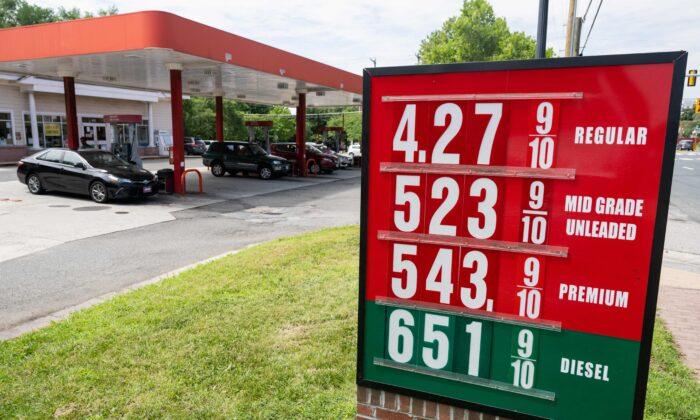Gas prices at the pump rose over the past week in the wake of higher oil prices, with experts foreseeing more increases as long as oil costs remain elevated.
The national average gas price has risen every day since March 29.
“When the cost of crude oil crosses the $80 a barrel mark, that puts a lot of upward pressure on what we pay at the pump,” said Andrew Gross, AAA spokesperson. “And as long as oil costs remain at the current level, drivers will likely see incremental price increases for now.”
California, where gas costs $4.90 per gallon, is the most expensive state, and Mississippi is the cheapest, with gas at $3.17; seven had gas prices exceed $4 per gallon.
Gasoline Stocks, Rising Oil Prices
According to data from the Energy Information Administration (EIA), gasoline demand dropped to 8.94 million barrels per day (bpd) in the week that ended on April 4 from 9.3 million on March 31. Gasoline stocks fell to 222.2 million barrels from 222.6 million during this period.“Lower demand would typically push pump prices down; instead, elevated oil prices have pushed them higher. If oil prices continue to rise, pump prices will follow suit,” AAA stated.
In the international market, Saudi Arabia and OPEC+ crude oil producers have announced additional production cuts of 1.16 million bpd. At the same time, China has been importing large quantities of oil following its economy reopening. These factors have contributed to boosting oil prices.
Downplaying Production Cut Impact
The Biden administration has downplayed the impact of OPEC+ production cuts. In October 2022, President Joe Biden threatened Saudi Arabia with consequences if OPEC+ were to continue with production cuts.During a press briefing on April 5 following the latest OPEC+ cuts, National Security Council spokesman John Kirby insisted that the Biden administration’s responses to these two incidents weren’t inconsistent since the events aren’t alike.
Last month, House Majority Leader Steve Scalise (R-La.) announced a new reform package aimed at restoring U.S. energy independence and protecting American families.
“The Lower Energy Costs Act will fast-track American energy production, and includes comprehensive permitting reforms that will speed construction for everything from pipelines to transmission to water infrastructure.
“And it ensures that the critical minerals needed for advanced technologies come from America—not China.”





